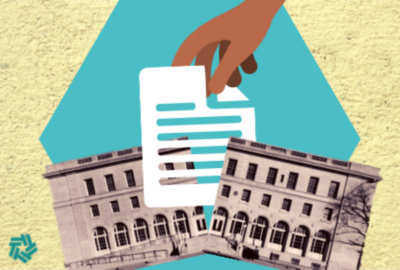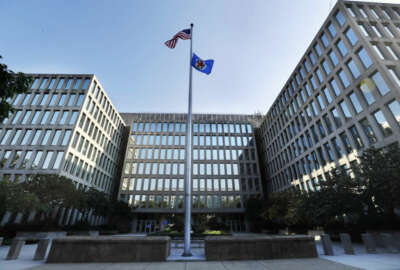Blue Campaign brings DHS together to combat human trafficking
This week on Agency of the Month, Angie Salazar, section chief of the Human Smuggling and Trafficking Unit at U.S. Immigration and Customs Enforcement, speaks with...
wfedstaff | April 17, 2015 4:43 pm
In 2012, the Department of Homeland Security launched 894 investigations of human trafficking. Some cases include only one victim; others have as many as 100. The Blue Campaign brings all agencies within the department together to combat human trafficking through enhanced public awareness, information sharing, and victim assistance.
Angie Salazar is the section chief of the Human Smuggling and Trafficking Unit at U.S. Immigration and Customs Enforcement. Her office is the headquarters for overseeing investigations worldwide. They establish policies and procedures and make sure agents and investigators in the field are up to date on the most current laws.
Blue is a “one message campaign” that takes awareness and coordination to another level, according to Salazar. Because each component of DHS has a unique role to play it’s important to stay on the same page. The Blue Campaign ensures regular and need-based meetings to coordinate new initiatives among agencies and update old ones.
The Blue Campaign creates awareness with the public through training and newsletters. On the campaign’s website, individuals and organizations can learn the signs of human trafficking, take on-line training courses and report suspected cases. Salazar says ICE will coordinate with employers who want to educate managers and employees. She says they have reached as many as 3000 employees nationwide through one organization. While budget constraints limit what they can do, she says they are doing the most with what they’ve got.
Traffickers look for the most vulnerable victims. People who don’t speak the language, are poor, have a low level of education, are far from home and have a lot of people depending on them are the biggest targets. Salazar says looking back at old cases and establishing trends has enabled them to spread awareness around the world in countries where the crime has been prevalent.
Human smuggling and human trafficking are different crimes but they often go hand in hand. Human smuggling is a border crime; it is a service for a fee. However, a victim of human trafficking may never leave their home town. DHS calls it a form of modern day slavery. Because victims live in fear they rarely self-report. Many don’t even know it is a crime. Salazar says many see ICE as primarily an immigration agency but the priority is to ensure their basic rights aren’t violated regardless of their immigration status.
The challenge is the numbers. Every year it continues to grow. Investigations have risen steadily from 651 in 2010 to 894 in 2012. “For us it’s this constant battle between: are we identifying what’s out there or is there this huge group or number of victims that’s out there that we’re not finding,” says Salazar. When she looks at the numbers she points to the survivors who have become independent individuals in society again.
“Everyone wants to talk about what a big problem it is… It shouldn’t have to be millions for anyone to want to be part of this solution or to try to identify victims… No one should be in this situation. Not in this day and age.”
Copyright © 2024 Federal News Network. All rights reserved. This website is not intended for users located within the European Economic Area.





